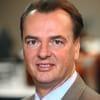Explore all the information on
Dairy cattle - Management practices
Welcome to the page about Dairy cattle - Management practices of Engormix; a source of knowledge on Dairy cattle - Management practices.
Post-calving care for cattle is a critical phase in dairy farming that significantly impacts the health and productivity of both cows and their offspring. Proper care during this period is essential to ensure a smooth transition from pregnancy to lactation and to prevent potential complications. In this article, we will delve into the key aspects of post-calving care for cattle and why it is of utmost importance. Understanding the Significance of Post-Calving Care Calving...
Comments : 0
Recommendations: 0
Introduction Milk yield of a dairy cow depends on four main factors: (a) genetic ability; (b) feeding program; (c) herd management; and (d) health. As cows continue to improve genetically, we must also improve nutrition and management to allow the cow to produce to her inherited potential. A good dairy feeding program must consider the quantity fed, the suitability of the feed and how and when the feeds are offered. Dry Matter...
Comments : 22
Recommendations: 11
During this Real Science Lecture from Dr. Joe McFadden and Balchem, we share research and details on how we can speed up progress to mitigating methane emissions...
Comments : 2
Recommendations: 1
An article dealing with this topic was recently published in the prestigious journal of the dairy industry, Journal of Dairy Science (Espinoza-Sandoval et. al., JDS 106: 2023). The article examines, using a statistical model, the feasibility of investing in cooling the cows in the summer in various countries around the Mediterranean Sea (Europe, North Africa and the Middle East), where there are different “climate zones” regarding dairy farming. The model presented in this...
Comments : 0
Recommendations: 0
When talking about the negative impact of heat stress on milk production, we usually refer to the impact on milk volume (liters per cow per day or per lactation). The reality is that this is only part of the problem, which causes economic losses to farmers and dairy industry. As will be presented in this article, heat stress negatively affects milk fat and protein content and reduce milk quality, by increasing milk Somatic Cell Count (SCC) and bacterial count. In some cases, especially in...
Comments : 1
Recommendations: 3
Dear All, My friend is facing a problem on dairy farm..there is Watery Nasal Discharge,Hypersalivation,Normal temp.Milk production was slightly decreased but now its normal.Initially one of the aborted cows started showing these signs but that was high temp. and after that all other are showing these signs but with normal temp. please guide me what could be the possibilities and ways to manage this. feeding components are Silage,Green fodder,vanda,Gluten,mineral and soda...
Comments : 11
Recommendations: 0
Vinicius Chiappetta, Global Commercial Director for Livestock Nutrition and Farm Management at Cargill, talks about the concept of Precision Farming, its benefits, possible obstacles, and how can it be monitored efficiently. He will speak on this subject at the Animal AgTech Innovation Summit in Amsterdam on October 12th....
Comments : 4
Recommendations: 3
During this Real Science Lecture by Dr. Joe McFadden and Balchem, we share research and details on how we can speed up progress to mitigating methane emissions...
Comments : 1
Recommendations: 0
Heat stress related production loss, compromised welfare and cattle mortality are global concerns, which are increasing in the context of climate change and increase productivity of the cows. Cattle response to heat stress varies, based on individuality and thermal environment. In this article I intend to describe heat stress monitoring, in individual and herd basis, making use of thermal indices, as well as physiological and behavioral changes occurring in the heat stressed cow. 1....
Comments : 0
Recommendations: 2
Heat stress related production loss, compromised welfare and cattle mortality are global concerns which are increasing in the context of climate change and global warming. To maintain the welfare and performance of livestock, monitoring the effects of climatic extremes is important. Farming systems are becoming increasingly automated and remote/automated monitoring of animals is an ultimate need to overcome the limitations of human observation for continuous characterization of cows...
Comments : 0
Recommendations: 0
Introduction Downer cow syndrome (DCS) is defined as lateral or sternal recumbency that persists for longer than 24 hours [1], or that persists for longer than two weeks despite of treatment [2]. The incidence of this syndrome ranges from 4.5 to 14% [3]. Downer cow syndrome can be seen in all stages of the animal’s reproductive cycle but the majority of all downer cows are diagnosed shortly after parturition. A multitude of metabolic, infectious, toxic, degenerative and...
Comments : 0
Recommendations: 0
During this Real Science Lecture from Dr. Joe McFadden and Balchem, we share research and details on how we can speed up progress to mitigating methane emissions...
Comments : 0
Recommendations: 1
Introduction The metabolic cages are used to study the metabolism of feeds in the animal. Metabolic trials are conducted to collect the feces, urine and feeds residue using precisely for analysis nutrients intake, digestibility, nitrogen and mineral balance. It is generally conducted in confined shed/shelter with underground place for urine collection. It is observed that due to movement of animal urine collection pipes comes out of the drum resulting in loss of urine. In this...
Comments : 3
Recommendations: 2
INTRODUCTION Milk conductivity has been evaluated for mastitis detection in the past without a clear picture of how it works. The information shown in this descriptive study shows the normal variation that occurs throughout the lactation in dairy cows. MATERIALS AND METHODS Data from different farms was used for this study. All farms had milk meters equipped with conductivity probes (Afimilk, Israel). Cows were automatically...
Comments : 0
Recommendations: 0
Throughout 2022, the Animal Nutrition & Health team intensified the focus on helping global agriculture meet the challenge of feeding an ever-growing population, sustainably. And that challenge will only be met with a commitment to improving...
Comments : 0
Recommendations: 0
The Historical use of Models in Animal Agriculture Models of all types have a strong history of application in animal production, where their objectives have typically revolved around optimally feeding and growing livestock. For ~50 years, mathematical models have been assisting researchers, nutritionists and producers with decision making on various aspects of livestock production. A typical trajectory for model development has been (1) the execution of experiments to...
Comments : 1
Recommendations: 1
Introduction Ruminants play a crucial role in food security. They supply 51% of all protein from the livestock sector; of which 67 and 33% are from milk and meat, respectively (Gerber et al., 2013). For many populations, livestock is a primary source of nutrition, and not simply a source of calories. Ruminants have the digestive particularity of being able to digest fibrous material (i.e., forages, agro-industrial by-products and crop residues) that is not edible to humans, and...
Comments : 0
Recommendations: 0
Introduction Governments, the private sector, and consumers are increasingly aware of the potential impacts of elevated greenhouse gases (GHG) in the atmosphere and their impacts on climate change. All segments of society are challenged with reducing GHG emissions to limit global warming to 1.5◦ C above pre-industrial levels by 2050. While no government legislation or carbon tax has been imposed on livestock emissions in Canada, there is increasing pressure on the...
Comments : 0
Recommendations: 0
Introduction Climate change is a global issue that requires comprehensive and far-reaching solutions across all economic and demographic jurisdictions. The Paris Climate Agreement, adopted in 2015, sets out a global framework to address harmful climate impacts by limiting additional global warming to well below 2 degrees Celsius (°C) (1.5 °C goal). The accord recognizes regional differences and the need for specific actions across all jurisdictions, including developed...
Comments : 0
Recommendations: 0
In mid-June this year, I realized a professional visit to Spain, where I lectured at a national conference organized by one of the country’s most popular dairy newspaper, Vaca Pinta, followed by a week of lecturing and consultancy for large scale dairy farms with MSD, realized in different regions of Spain. Among the visited regions were Talavera, south of Madrid, Galicia, in the northwest of the country, in the Atlantic coast and then the regions close to the cities of Girona and...
Comments : 2
Recommendations: 0

.jpg&w=3840&q=75)



















